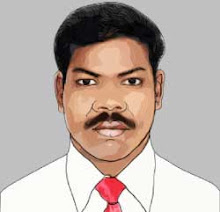Guest Columns by Sauvik Chakraverti,
The Newindpress on Sunday, 2007-2008
A teenage wasteland
I was a teenager when I first heard Roger Daltrey cry ‘‘teenage wasteland’’ and it sent a chill down my spine. The teen years were the best years, and it seemed to me I was just wasting them in a formal education that was totally removed from the real world and got more complex and un-understandable by the day. I dropped out and started life as an entrepreneur. It is this early experience that has been invaluable to my later life. Today, my son has finished with high school and has almost finished with his teens. I write this for him and those of his generation, so that many will get out of this useless education and the chasing of worthless degrees, and step into the real world out there and earn their own keep.
Babur conquered
The Honourable East India Company Service (HEICS) also recruited the very young. Henry Vansittart arrived in
The great Charles Metcalfe arrived in
Of course, Babur and the HEICS chaps were ‘‘educated’’ in the deep sense. Babur himself trained his young cousin, Haidar, aged just 9, ‘‘in the arts of calligraphy, reading, making verses, epistolary style, painting and illumination… such crafts as seal-engraving, jeweller’s and goldsmith’s work, saddlery and armour-making, also in the construction of arrows, spear-heads and knives… in the affairs of the State, in important transactions, in planning campaigns and forays, in archery, in hunting, in the training of falcons, and in everything that is useful in the government of a kingdom.’’ HEICS recruits came from boarding schools where they were taught liberal humanities (John Locke was their prophet), classical philosophy and history, games and sports and later, at
What our school system does today is prolong adolescence. In my time, school ended at Class 11. Today, it is Class 12. Then comes the mandatory BA (for everyone must be a ‘‘graduate’’). However, neither the Class 12, nor the BA, lead to any occupation, profession or vocation. There is therefore the need to study even further. I have met numberless 24-year-olds who are still ‘‘students’’, hence unemployed, unmarried, and dependant on their parents. They also have no experience of the real world. They are ‘‘old adolescents’’. This must end.
In a poor country, where life expectancy is low, schooling must be brief and meaningful. It must equip a very young person to flourish in the global free market: to ‘‘find a calling’’, and seek knowledge relevant to that calling. The young, through short courses, can learn even medicine. Parth Shah of the Centre for Civil Society studied pharmacology before shifting to Economics. He often says that 90 per cent of Indian diseases are common infections that can be treated by paramedics who study just two years. Instead of chasing engineering and medical degrees, it would be better for the young if they could practice and learn on the job.
Paramedics of today will study more later. And engineering trainees in engineering firms will grow with their firms. Remember, we had IITs and IIMs in our socialist heydays, and little job creation or useful knowledge resulted from them. Socialist India was low on technology and the economy was moribund, so there were very few business opportunities for trained managers.
Let us also not forget that the free market economy offers innumerable ‘‘callings’’, far more than the doctor, engineer, babu, lawyer, banker, accountant limit set by the socialist education system. There will be VJs, musicians, fashion designers, models, photographers, admen and copywriters, chefs and bartenders, journalists, sportspersons, go-go dancers, tattoo artists and, above all, zillions of entrepreneurs. Such a world will require disaggregated, de-homogenised, compartmentalised, and un-uniform schools of knowledge, very different from the high schools of today.
The writer is the author of Antidote: Essays Against the


No comments:
Post a Comment